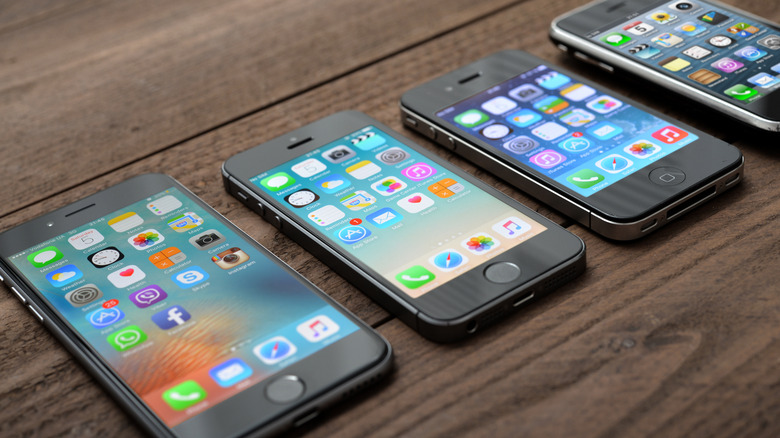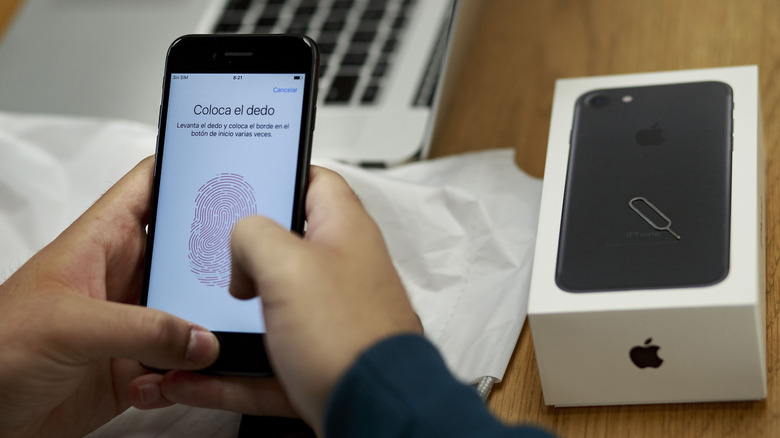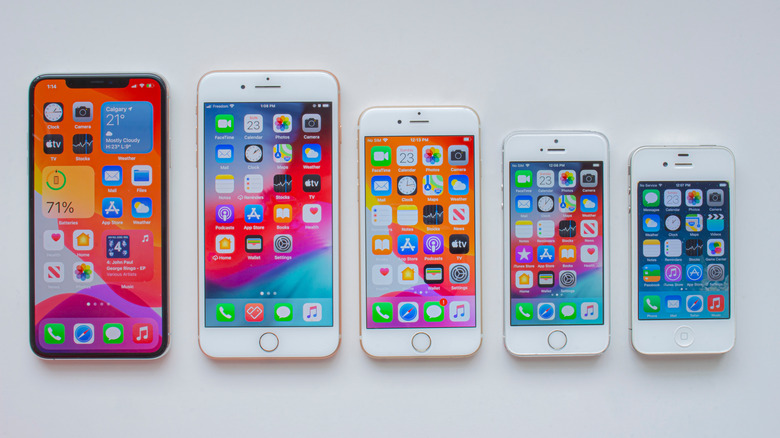Which Was The Last iPhone Model With A Home Button (And Do Users Miss The Feature)?
Sometimes, it can be hard to believe that it has already been more than 15 years since the first iPhone was launched. At the time, it was a pioneering device that changed the game for smartphone manufacturers with its big screen and app-focused strategy. Years later, the iPhone has gone through various facelifts to stay ahead of the competition. However, one iPhone feature that Apple slowly stopped making, which was met with mixed reviews, was its Home button.
In its early days, the Home button was a crucial design aspect of navigating and conducting actions on the iPhone, like taking screenshots. As time passed, Apple also added Touch ID features that helped reduce the number of instances that users had to type in passcodes. For many fans of the old design, the iPhone SE line is the only remaining option to keep the Home button, as the 2020 iPhone SE (2nd Gen) and the 2022 iPhone SE (3rd gen) were the last iPhones released with this feature.
In fact, several users on Reddit have claimed that aside from the affordable price point, the Home button was a key reason they made an iPhone SE purchase. However, rumors have been going around that Apple will put the nail in the Home-button coffin with the upcoming release of the iPhone SE 4. Because of this, some users have become nostalgic about the old-school method of navigating their devices. Here's what they had to say about saying goodbye.
Why some users miss the iPhone Home button
For some iPhone users, a big point of grief with the Home button demise is primarily rooted in the loss of the Touch ID features, which made it possible to unlock your device even when you're not looking. While not as much of a deal-breaker, some users also mentioned the ease of using Apple Pay, wherein they didn't have to show their face to confirm payments. They also lamented the loss of how they could easily add thumbprints of trusted people to give them access to their iPhones without giving their actual passcodes.
Not to mention, there are people who spend a lot of time with their faces covered, especially if they live in areas with harsh weather or are required to put on a lot of gear for work. Initially, users having trouble opening their iPhones was a common pain point when wearing face masks was mandated. However, Apple resolved this by releasing a software update for Face ID with mask support soon after.
Lastly, from a privacy standpoint, some people aren't as comfortable with the idea of using facial recognition software. This is despite Apple iterating that its Face ID data remains strictly on the iPhone and is never uploaded to iCloud or other cloud storage systems.
Although some Apple users may be upset to know that the physical Home button on the iPhone is gone for good, there are a couple of benefits that many iPhone owners claim to enjoy.
The benefits of dropping the iPhone Home button
In many ways, nostalgia can feel a little like wearing rose-colored glasses. Because of this, owners of older iPhones may have forgotten some of the problems we had with the Home button in the past, like suddenly becoming unresponsive or getting stuck. In fact, when it did have problems, it wasn't always easy to repair. With Apple's proprietary design, it pairs each logic board to individual iPhone Home buttons. Because of this, iFixit mentions that while you can still fix your Home button yourself or through third-party repair centers, you'll only be able to get back the navigation capabilities and lose the Touch ID functionality altogether.
Since dropping the Home button, the latest flagship iPhone displays have also increased in size. For example, the iPhone 8 and 8 Plus had a diagonal display size of 4.7 inches and 5.5 inches, respectively. In 2022, the 3rd generation iPhone SE, which still has the Home button, has retained the 4.7-inch display. In contrast, the earliest model without the Home button, the iPhone X, had an all-screen OLED Multi-Touch display that was 5.8 inches, and this trend hasn't stopped since.
In recent times, the iPhone 16 and iPhone 16 Plus models have even bigger displays at 6.1 inches and 6.7 inches, respectively. According to a 2014 Cyberpsychology, Behavior, and Social Networking study, this could contribute to both more immersive experiences and higher adoption rates.
Why Apple decided to get rid of the iPhone Home button
Although there are no officially disclosed reasons, we can make a lot of guesses as to why Apple decided to axe the Home button. The first and most obvious is that removing it makes it possible to have the full-sized screen that is now the norm for the latest iPhone models. In the years that followed its removal from the flagship iPhone models, Apple also introduced several features like Dynamic Island, which made use of its increasing screen real estate.
Next, removing the physical button may have something to do with the improved water resistance we see in later iPhone models. The last iPhone models with Home buttons, like the iPhone 7 and the iPhone 8, only had a IP67 water, splash, and dust resistance rating. While one of the first iPhone models to get rid of the Home button, the iPhone X, shared the same rating, succeeding models from the iPhone XS and iPhone XS Max onwards had improved IP68 ratings.
Unfortunately, the reality is that any new type of technology can come with some resistance. That said, Face ID has come a long way since it was first released in 2017. As technology improves, it's likely that users will find more ways to unlock the power of Face ID with time. And if you ever encounter problems with it, we have several suggestions on how to fix an iPhone where Face ID not working.



